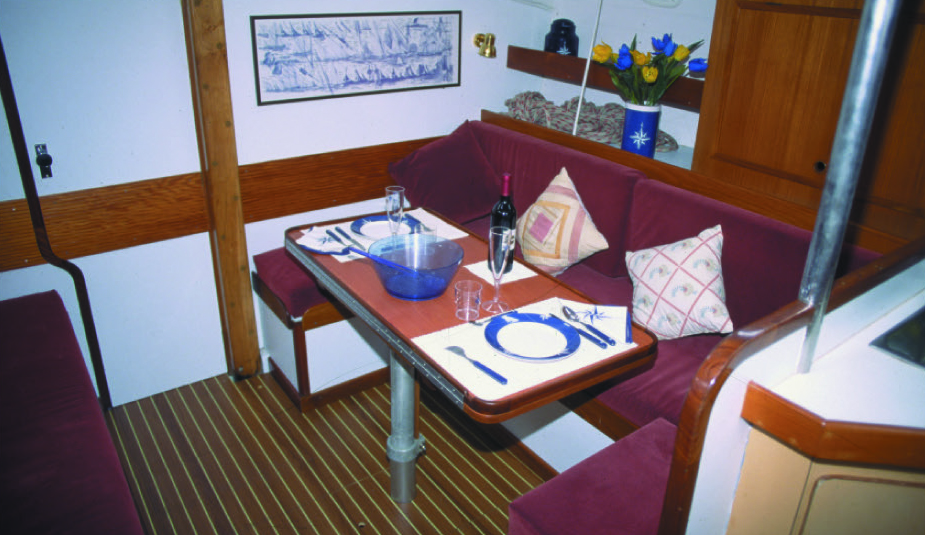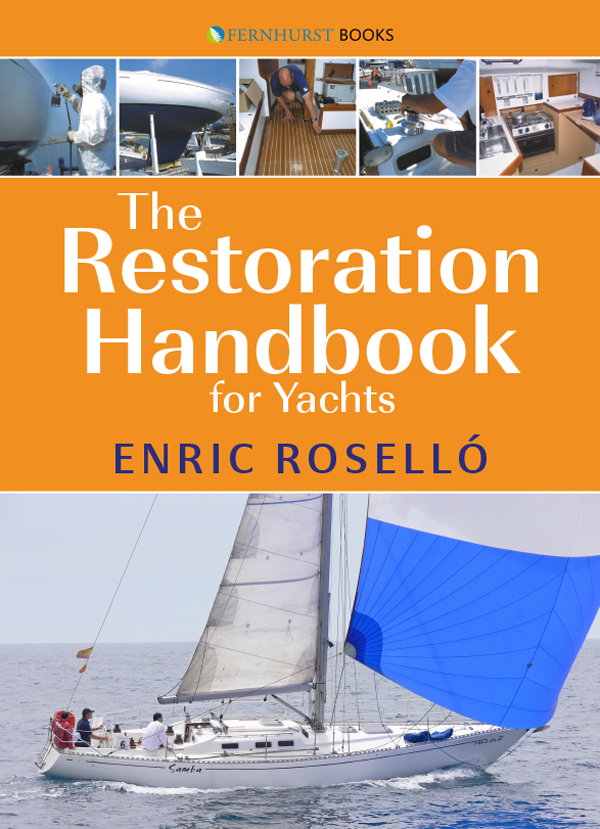IN SEARCH OF A SECOND YOUTH
Before starting to work on a boat it is a good idea to make a list of the problems that need to be solved and have as clear an idea as possible of the overall approach of the refit.
Making an inventory of the jobs that lie ahead is much more important than you may think. From this first inventory must emerge the first ideas, approximate as they may be, regarding the budget for the repair work, how long it is going to take and the necessary planning of the different stages.
Few yacht owners have either the technical knowhow or enough free time to completely rebuild or restore a boat themselves. The usual situation for boat owners is that they find themselves with a boat, either a second-hand boat or one that used to be new but no longer is, and are prepared to carry out, on their own account, some kind of limited repair or refitting work.
There is no clear dividing line that marks the level of technical difficulty that amateurs should not cross in terms of the work that needs to be done on their boats. And in the same way that the best professional mechanic is not necessarily a great painter, some amateurs will find their métier replacing the electrical wiring and, at the same time, will be incapable of cutting a plank of wood with a handsaw. Or vice versa.
Honestly appraising your own do-it-yourself ability, with all of its pros and cons, forms a vital part of the initial refit inventory. From this process of self-evaluation a series of jobs will emerge that you feel you can take on yourself, others for which you will unavoidably need professional help and some that you will be able to do yourself as long as you can pick up a few tips. We hope that this book will help you with this breakdown.
A Complete Refit
We were going to renovate Samba from keel to masthead including all the equipment between, and her interiors. The solutions that we would be adopting were not absolutes, it could be possible to do them better, worse or simply in a different way altogether, it is not a question of laying down the law. Our intention here is to contribute ideas and working methods that might prove to be of help to anyone finding themselves in similar positions to the ones we were in.
By presenting the different jobs in independent chapters we are also offering the opportunity to limit yourself to specific areas. One year you might be interested in replacing the water installation or the electrical wiring, while the next you may wish to subject the hull to treatment against osmosis or to strip her out and redo the interior furnishing.
For our part we will try to explain each of the jobs that we took on in a practical sense, explaining what we did and why and giving you some idea of how long it took us. This will be accompanied by a sequence of photos that illustrate these different processes. In this way we hope that some of you may pluck up the courage to do the work yourselves while those that decide to entrust the work to professionals will have a good idea of what is involved and what bills they can expect.
Thirty Years Before the Mast
Samba was originally delivered to her first owner, a charter company, in kit form and the initial layout of her interior provided space for as many as 11 bunks. After a short interval as a privately owned boat she was sold again, returning to charter use in the eighties and early nineties. During these years some of her berths were removed and her accommodation space summarily refitted.
For one reason or another, she never managed to settle on a ultimate interior finish, which little by little began to lose its shine and comfort. Much the same thing was also happening up on deck where, since the day she was launched, the only work that had ever been done was limited to fixing whatever got broken.
Our aim was to rescue Samba from her ignominy and to return her dignity to her. A hull as secure, good looking and seamanlike deserves nothing less. There is one consideration that we feel it is important to make at this point: one of the first mistakes that an amateur must avoid when faced with an important refit is choosing the wrong boat. When considering the possibility of investing a lot of time and money on rebuilding your boat you have to be sure that the model of the boat in question, and her sailing characteristics, are as close as possible to what you are actually looking for. If this is not the case it is far too easy to become discouraged at any time during the refit, or even after you have finished the work.

The saloon before the refit

And after
The Restoration Handbook for Yachts is written by Enric Roselló. Enric is an experienced sailor and nautical journalist in Spain. He has a great deal of personal experience of boat restoration and repair, having carried out a complete refit of his own yacht, Samba.
To get more top tips from Enric, The Restoration Handbook for Yachts can be bought here

© Not to be reproduced without written permission from Fernhurst Books Limited.